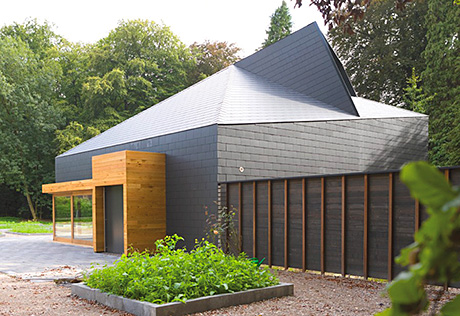
Marley Eternit has launched a BIM (building information modelling) service for fibre cement slates.
Called BIM Space and available through its web site, the service was developed to help architects, contractors and building services engineers and uses Revit BIM software. “This new service aims to make life as easy as possible for customers from initial design detailing to material specification, component placement and structural performance,” said Marley. “Facilities are managed throughout their lifetimes, which minimises the cost implications associated with maintenance work.”
A typical BIM model or object for fibre cement slate contains detailed dimensions, product specifications, material performance data and the environmental credentials of each product along with image files to create high quality 3D renderings of the building. The BIM object also enables specifiers to directly request samples for the project they are working on without leaving the software.
The system allows the roof structure to be built ‘virtually’ before any physical construction takes place. Specifiers can fully visualise their project and it is possible to access the information that sits behind the virtual construction, enabling different organisations to work together on the same project.
Steve Bryceson, technical advisory service manager at Marley Eternit, explained: “We launched BIM for our fibre cement slate range as this revolutionary software is now playing such a vital role in helping specifiers create developments faster and more economically whilst reducing environmental impact.
“As BIM also places new emphasis on the life cycle of a construction project, it is important to recognise the sustainability properties throughout the whole life cycle of fibre cement. Not only does fibre cement offer strong environmental credentials in the life cycle of the building but it is also 100% recyclable at the end of its use.”
He went on: “The advent of BIM also means that the environmental labelling of products is becoming even more important and manufacturers need to be able to demonstrate their sustainability credentials across a broader range of areas. Marley Eternit has worked with the Carbon Trust to achieve independent carbon footprints for its full range of roofing products.”
It’s believed around 40% of construction professionals are now using BIM.
Image – BIM software will be used for slate specification.










